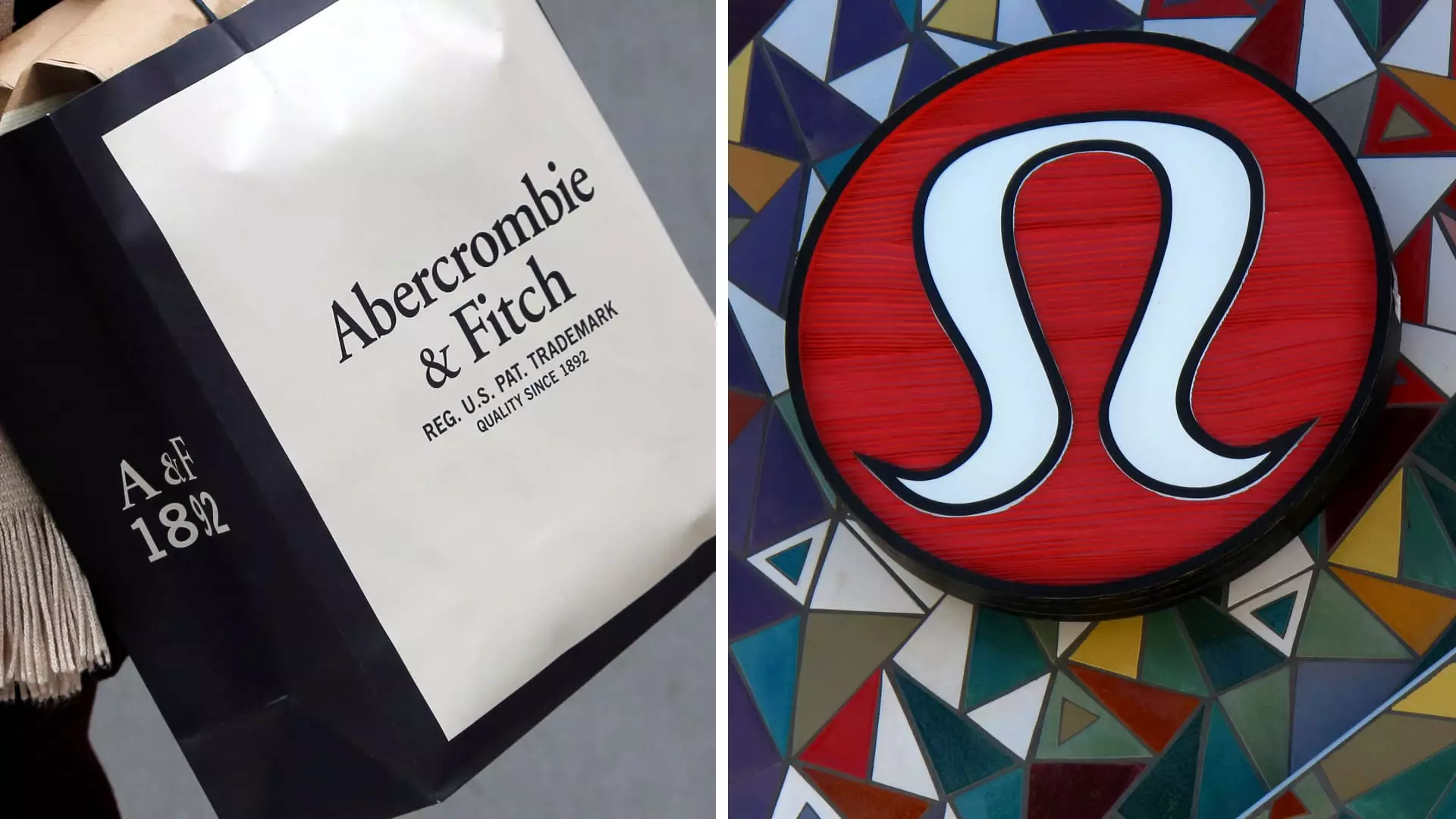As the holiday season approaches its peak, data emerging from major retail players in the United States paints a complex picture. While brands like Lululemon, Abercrombie & Fitch, and American Eagle have reported better-than-expected sales, the markets have responded with skepticism, leading to a decline in their stock prices. The turmoil reflects a growing unease on Wall Street, despite signs of healthy consumer spending during what is typically the most lucrative time of the year.
Initial results indicate that customers responded positively to product offerings from these retailers, enabling significant revisions in sales forecasts. Lululemon, for example, has raised its fourth-quarter sales projection from an already optimistic estimate, now anticipating growth of 11% to 12%. This is a notable increase from previous estimations and indicates a robust performance that should ideally foster investor confidence. However, this enthusiasm met with a stark decline in its stock value early Monday, presenting a puzzling contradiction to its positive financial forecasts.
Abercrombie & Fitch also shared its improved outlook, signaling a more favorable holiday quarter than originally anticipated. Despite nudging up its sales growth forecast to between 7% and 8%, investors remained wary. The apparel giant had dazzled the market with an impressive 21% sales growth last year, leading to heightened expectations that are difficult to meet consistently. This year’s guidance fell short of the upbeat narrative investors had anticipated, prompting a significant dip in stock prices, with Abercrombie shares dropping nearly 20%.
The company’s leadership remains optimistic, asserting that while the growth rate may be decelerating as they face more challenging year-over-year comparisons, the fundamentals of the brand remain strong. CEO Fran Horowitz emphasized a strategic pivot toward profitability, indicating a long-term vision to enhance shareholder value. This shift towards prioritizing margins over sheer sales volume might be seen as a prudent move in an increasingly competitive retail environment.
Contrasting Reports from Macy’s and Urban Outfitters
In stark contrast to the positive forecasts from Lululemon and Abercrombie, department store giant Macy’s issued disappointing news, projecting sales that could fall below earlier estimates. The drop in expectations has sent its shares down over 6%, a reflection of broader challenges faced by traditional retailers in adapting to shifting consumer behaviors and preferences. The struggles of Macy’s raise concerns that, despite some retailers thriving, many others may still be grappling with the realities of a post-pandemic retail climate.
Urban Outfitters reported solid performance with a 10% increase in net sales year-over-year, though it also flagged areas of underperformance. The brand’s comparable sales saw mild growth in its Anthropologie and Free People segments, but Urban’s namesake stores are lagging, creating a mixed narrative for investors. Such disparities within the same corporate family reveal the complex landscape retailers are navigating this season.
With the National Retail Federation projecting a modest sales increase of 2.5% to 3.5% for the holiday season, adjusting these figures for inflation indicates that real growth is expected to be minimal. Many retailers are contending with the residues of economic inefficiencies caused by inflation, which can cut into consumer purchase power and dampen overall spending levels. Despite this headwind, Mastercard SpendingPulse reported a year-over-year increase of 3.8% in retail sales (excluding automotive), suggesting that the overall consumer sentiment might still be relatively strong.
Yet, analysts are quick to highlight the mismatch between positive sales reports and the declining stock prices that many retailers are experiencing. Investor apprehension may suggest a hesitancy to fully embrace the holiday season’s potential due to lingering economic uncertainties and previous market patterns.
As prominent U.S. retailers prepare for the annual ICR conference in Orlando, they stand at a crossroads where performance meets investor expectations. With consumers displaying a willingness to spend, the focus will need to shift towards sustaining that momentum while addressing profitability and operational efficiency amidst evolving market dynamics. The results released by these retailers provide insightful data points, yet they underline a period of cautious optimism as the new year approaches.
The interplay between solid sales performances and fluctuating market reactions is a defining feature of this holiday shopping season. Investors will closely monitor how these companies adapt to the changing retail landscape, making informed decisions reflecting not just numbers but also the broader economic context as it unfolds.


Leave a Reply